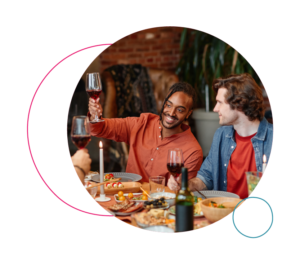
How do you begin to segment the multi-faced beast that is the global On Premise? Venue type is a good place to start. However, our research shows us that, even in the same venue, consumers will act differently depending on a number of factors; the time of day, who they are with, or that impossible characteristic to map; their mood. Add to this the number of distinct, but very similar outlet types and the simple task of segmenting the sector by type of venue becomes significantly more difficult (though not impossible, especially once the universe has been successfully shaped).
Consumer type is another often hailed manner of segmenting the sector, with the thinking being that, once you know who the distinct consumers are that consume your products, you are then able to target those particular groups more effectively. Again, in the world of the On Premise this has a fundamental flaw. Depending on what consumers are looking for their behaviour in bars, cafes, restaurants or clubs will differ significantly. Therefore, aiming for a certain consumer type who may seem perfectly aligned with your products may be totally misplaced, if your products are not in their particular occasion repertoire.
Regional segmentation makes sense from a field sales perspective whereby we can task salesforces within particular geographical boundaries. However, increasingly, outlets (and consumer behaviours within them) have more in common with similar outlets on the other side of the world than they do with the different type of On Premise venue next-door.
 The vast On Premise research that we undertake points to one segmentation that is most effective. Unfortunately, it is also the most complex. It takes into account all of the above and maps each over the other, but the thread weaving each dynamic together comes back to one variable – occasionality.
The vast On Premise research that we undertake points to one segmentation that is most effective. Unfortunately, it is also the most complex. It takes into account all of the above and maps each over the other, but the thread weaving each dynamic together comes back to one variable – occasionality.
The type of occasion that consumers visit the sector has a knock-on impact on nearly every other behaviour and decision within the On Premise. The consumer needs differ significantly by occasion and the most successful companies that we work with, by far, not only understand this nuance, but proactively lean into it to map their offerings to match these needs.
Of course, overlaying consumer type, product mix, venue type, consumption levels, salesforce and geographical profile on top of occasion will give the best results and the return on (significant) investment for collecting all of this data and insight and then forming a sophisticated On Premise strategy will reap significant rewards. However, I am all too conscious that such an undertaking is not applicable to every business, especially those thinking shorter-term.
As such, if a supplier were to come to me and ask how to best segment the sector, and if they insisted that they were unable to segment across all variables, then my suggestion would be to fully understand occasionality and how their products played and performed by occasion and to then develop an occasion-led strategy.
Why? Because this is the variable that not only impacts (and links) every other, but is the one that is most likely to shift and, consequently, most likely to impact sales.

Take the long-running trend of premiumisation. Yes, consumer dynamics play a role here; there is indeed an increasing desire from consumers to choose higher quality items. However, the underlying shift is also driven by a move away from higher-tempo occasions, with high consumption (and corresponding volume) to lower-tempo, relaxing occasions, where consumers are choosing to drink less, but better (resulting in an increase in value, rather than volume). With accessible treats also becoming more important amongst a cost of living crisis, consumers are opting to use our sector for those mini-luxury occasions and bring with them a mindset of extravagance.
Tracking these shifts in occasion will allow suppliers to be ahead of the curve, in both strategy, but also with innovation plans. One of the more interesting trends that we are seeing, within the wealth of On Premise data at our fingertips, is the bounceback of the after-work drinks occasion across Europe. However, this in itself, is also changing by nature, highlighting the need to not only track occasions, but to continue to monitor and understand the detail. High tempo, Friday, week-ending drinks are now being traded to Thursdays, while, across Europe this is merging with the aperitivo occasion.
All of which highlights how changing occasion dynamics are having profound effects on drinks choices, with resulting variation in sales shares. Rather than being behind the curve, proactively investing to build comprehensive occasion understanding, and then mapping to existing segmentations, is becoming increasingly less of a luxury and more of an essential.
CGA by NIQ’s On Premise User Survey (OPUS) provides suppliers and operators with vital insights into occasions and many more aspects of consumers’ behaviour and preferences. CGA also provides analysis of segment data from Outlet Index, a robust outlet universe database, covering and segmenting all On Premise outlets available within the market to the CGA global market segmentation. To learn more, please email Charlie Mitchell at charlie.mitchell@cgastrategy.com
Originally published in Global Drinks Intel Magazine




